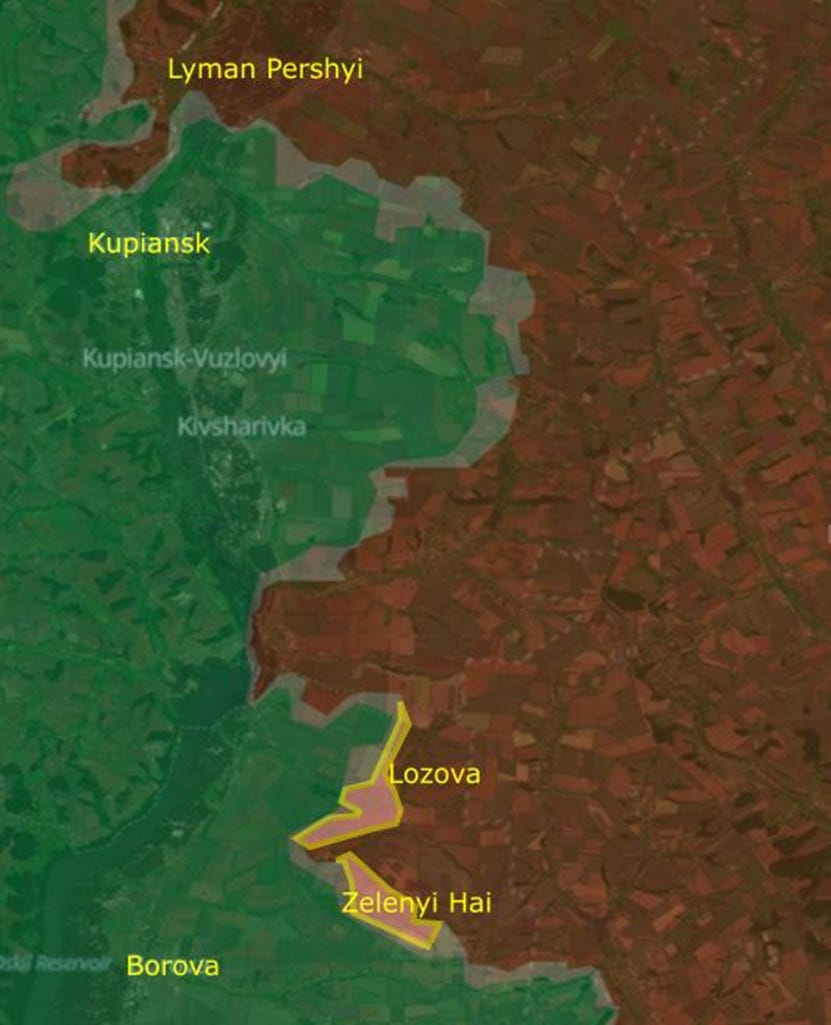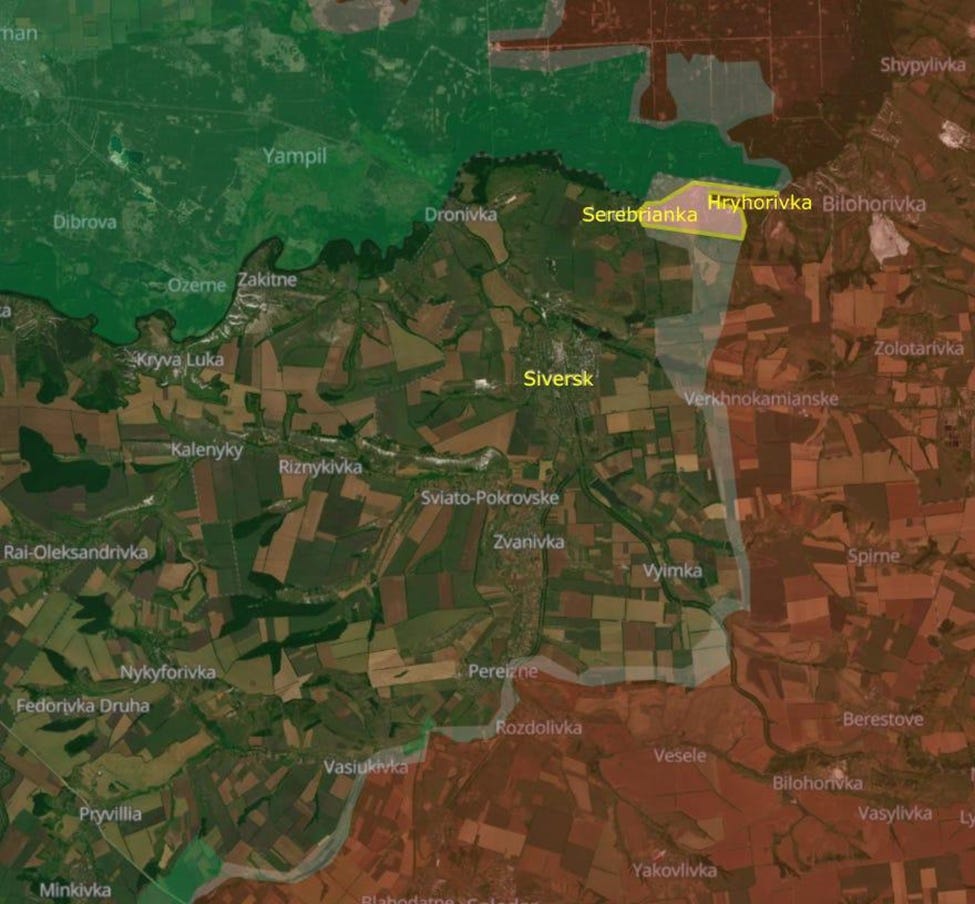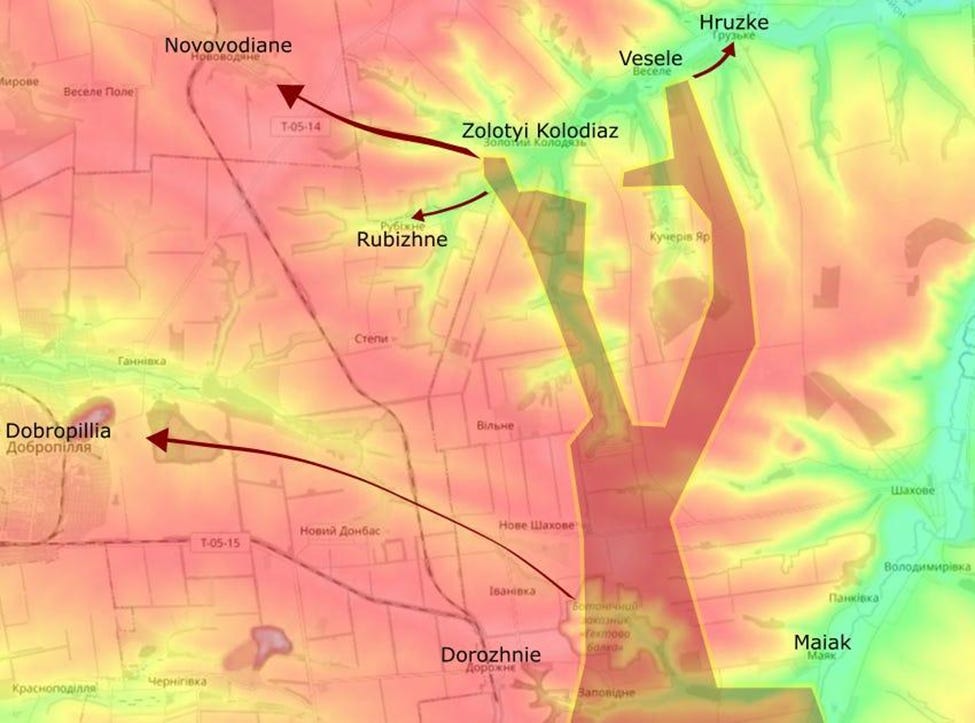(Intro by Tom Cooper)
Hello everybody!
That was fantastic, isn’t it? …watching the spectacular show staged by and for narcissist Dumpf for narcissist Pudding, the last Saturday. And, it’s going to be another spectacular show when in Washington D.C. today, all the ‘top leaders of Europe’ come begging and praying Dumpf not to sell Ukraine.
Oh, sorry: no, not to sell Ukraine. But, not to sell Ukraine too cheaply.
….and while doing that, they’re all going to be standing in queue to bend over.
…together with Zele… who, yesterday… was it yesterday? …doesn’t matter… saw a minute of his speech given during or after the meeting with Van der Leyen… and, oh man: what a powerful speech! So self-consciously announcing a cease-fire and security guarantees, and milk and honey, and few early Christmas wonders, too…
The media loves such shows - especially in the middle of the ‘summer gap’ - can’t say how much. Really, so much so, one simply couldn’t avoid catching this or that scene in the TV-news, or in the social media.
…although it’s all the time clear: absolutely nothing useful is going to come out of this soap opera. Just like absolutely nothing came out of any of earlier episodes of this soap opera. Which is something nobody is left to inform you about, because the same media has fired all of its experienced analysts. Emptied all of its ‘foreign affairs desks’ of them. To ‘save money’. Read: to increase profits. And so well, there’s nobody left to teach youngsters how to analyse ‘news’ and thus inform their viewers or readers…
And so, the only thing coming out of all of this is that they all - the zombie idiots in question, regardless if from the USA or the EU, plus the media, and the majority of the public - have already now, in mid-August 2025, forgotten similar shows performed by exactly the same collection of corrupt incompetents just, what… four or five months ago?
Back then, it was about Dumpf dressing down and then forcing Zele to sign that ‘minerals treaty’.
…and then half the Europe rushing to teach Zele how to deal with Dumpf in constructive fashion.
And that super-turbo-important treaty, worth… was it US$400 billion? …US$600 billion… what did Dumpf say in this regards? Ah, who cares… as is meanwhile well-known, that treaty was of such importance and urgency, that now there’s a column of SUVs and mini-busses carrying CEOs of all the top US corporations, all horny to exploit Ukrainian mineral wealth, stretching from Kyiv to Madrid…
…ah… there’s none?
Ah, see there: a squirrel! A cute squirrel, indeed!

How, you prefer cute cats-photos/videos? No problem…

…although, watch out: there’s a growing number of AI-created cat-photos posted online… tsk, tsk, tsk…
Actually, there’s meanwhile so much AI-created rubbish posted online, that one has hard times just trying to differentiate between it and the human-created rubbish. Where, considering the AIs were created by humans… sigh… no surprise…
But, you see: You’ve already forgotten Dumpf, and Pudding, and Zele, and all the other zombie idiots.
That’s how easy it is to manipulate the media and public.
Almost as easy as it is for Syrsky to cover-up his latest achievement: letting hundreds of Russians - including quite a bunch of the Russian Spetsnaz and almost an entire motor-rifle brigade - to infiltrate the frontline north-east of Pokrovsk, and then walk for up to 50km deep behind the Ukrainian frontlines.
…and then react in an entirely new-, never-seen-before fashion: by patching up the frontline by about a dozen of battalions drawn from entirely different brigades of the ZSU, deployed anywhere between Sumy and Kherson…
I mean… seriously now: please, be so kind, take a deep breath, think soberly. That is an achievement. One can’t deny that. Even such weirdos like me can’t recall seeing such an effective operation of letting the enemy infiltrate one’s frontline since… was it Ugandans letting the Chadians drive 400+ kilometres behind their frontlines in the northern DR Congo of late 1998? (…and that while losing more troops to snake-bites, traffic accidents, and tropical diseases, than to the enemy fire…)
How… I shouldn’t make such comparisons?
Is it because you’ve never heard of the Second Congo War, or because you’re… erm… ‘sensitive about historical-’, perhaps also ‘racial purities’, and thus find it ‘unfair’ for me to compare the ‘noble, European’, ‘almost NATO’ ZSU to such ‘African bimbos’ like those of the Chadian- or Ugandan Army?
Ah, it’s because that happened in Africa, and Africa is far away, and why should anybody care…?
Sure. And very convenient, too.
OK. Hand on heart: Ugandans were (and remain) a disputable quality, but at least the Chadian Army has my most sincere apology. I admit: it’s really unfair to compare it with the ZSU under Syrsky. I would’ve done much better if offering a comparison to one of ‘noble’ Wehrmacht infantry’s infiltrations of 1944…right…?
But, I’m digressing. As so often.
Over to Don…
***
Sumy/Kursk
After nearly two weeks of loud guessing all over the social media, official Ukraine announced the liberation of Stepne and Novokostiantynivka, two border villages that no one knew were lost, but the 225th Assault Regiment had to fight to recover. Yunakivka was hit by a Ukrainian airstrike. Ukrainian positions are hit at Varachyne.
15 km north of the border near Zvannoye, the 47th Brigade destroyed a truck trying to cross an underwater bridge while towing a gun.
A Russian Lieutenant General lost an arm and a leg when a convoy was attacked near Zhuryatino, 40 km north of the border.
***
Kupiansk
Four armored vehicles were destroyed in a Russian assault out of Lyman Pershyi.
Since Syrsky has successfully disabled the autonomy of local ZSU commanders, now the Russians are successful again: south of Kupiansk, they have entered Zelenyi Hai, advancing 1-1.5 km.

***
Terny
A tank from the 63rd Brigade survives a drone hit and proceeds to shell Russian infantry.
***
Siversk
The last week, Syrsky’s micromanagement was highly successful in this sector, too. Serebrianka was hit by rockets and occupied by the Russians. Russian armored vehicles were hit outside Serebrianka.

***
Kostiantynivka
Ukrainians in Katerynivka were attacked. Russians near Rusyn Yar were attacked, as were Ukrainians. A Russian airstrike on the southern edge of Kostiantynivka.
35 km behind the front lines, Russia’s 132nd Brigade took over School No. 28 in Yenakiieve to use as their headquarters. Multiple drones started fires which created secondary explosions.
***
Pokrovsk
If one is a military incompetent - like, just for example, the zombie idiots in charge of Kyiv or anywhere in ‘the West’ (so, approximately, from Santa Monica to Warsaw), or top generals in command of the Ukrainian Armed Forces - then the infiltration tactics is something entirely new. Something so much unheard of, can’t say. Really: something absolutely unimaginable. Just like training of own troops. Or, 11 years since the Russian invasion of the Crimea and Donbas, and 3,5 years since the all-out invasion of 2022: developing coherent strategy for fighting and winning this war…
This is why it’s perfectly understandable that the top brass of the ZSU nowadays can’t find a solution for the Russians doing little else but what (just for example) the Soviets used to regularly do back during the Second World War.
And so it happens that, meanwhile, it’s a ‘standard’ Russian tactic to send small teams to the Ukrainian lines and look for gaps. If they aren’t detected and killed, they keep walking until they are behind Ukrainian lines. Usually, they go for 2-8km before being detected. Usually, they will stop at some point and dig in, waiting for other teams to reach them so they can assemble into a larger force of maybe 10-15 people and attack a specific objective. But, that’s usually… In the case of Pokrovsk, they’ve found a gap between Dorozhnie and Maiak and then called for reinforcements. The Russians then sent the Spetsnaz plus a better part of an entire motor-rifle brigade. In ‘teams’. Through that gap. And, instead of stopping after the usual 2-8km, they kept walking up to 14 km. One route used the low elevations of a water drainage system to reach Zolotyi Kolodiaz. Another route used the high ground to reach Vesele. Some Russians were engaged on the outskirts of Dobropillia...
Initially, about 200-300 Russians infiltrated the gap and kept walking as far as 16 km to various villages. Those of involved Russian that were meanwhile captured have said they began walking from Selydove two weeks earlier, which meant that some teams traveled a total of 50 km. These infiltrators didn’t necessarily control the territory they moved across. The markings on the map simply indicate the most heavily traveled routes used by the infiltrators.

…all of these not controlled by the ZSU, of course.
Now, thanks to the endless wisdom of the Ukrainian political- and military leadership, infiltrations of ZSU’s lines are meanwhile happening not only ‘regularly’, but ‘often’. The front lines are thin with gaps of 200-300 meters in between positions, and they’re going to become thinner. Detection of enemy forces is heavily reliant on drones or sensors. If coverage is absent because of weather, interception by enemy drones, battery issues or other reasons, then it’s possible for enemy soldiers to walk across open fields for 5-10-15-20… minutes without being detected. Or maybe they were detected, either on foot or as they raced their motorcycles through the gap, but found cover and concealment before they could be attacked. In those cases, the known Russian positions are attacked with drones or indirect fire and small Ukrainian teams clear the locations. Units in positions that are stable for months are conducting these actions all the time.
Killing Russians before they break through is important. Reacting to the breakthroughs that will happen is just as important. If those actions aren’t taken, then Russia will continue to feed troops into those narrow penetrations and search for new gaps in the disrupted defensive line, constantly expanding until sufficient resources are allocated to stop them. If the local brigade or larger Operational Tactical Group fails to respond adequately within minutes, and then hours… not to talk about days or weeks (like in this case), then a narrow penetration is certain to grow like a cancer, and becomes a huge bulge. And then, usually in this war: a bulge resulting in creation of yet another cauldron…

(From left to right) In April 2024, improper unit rotations left a gap at the railroad line near Ocheretyne. The Russians moved through it, Ukraine didn’t respond quickly and the defenses in front of Avdiivka unraveled. Three months later, the Russians infiltrated gaps and surrounded a battalion at Prohres. In the absence of leadership, the 47th Brigade took charge to rescue the battalion but the defenses were further disrupted. Terny had been held for months against heavy attacks but manpower shortages created bigger gaps and at some point the defenders couldn’t respond without operational or strategic help so the Russians kept walking forward. The crisis for Pokrovsk and Kostiantynivka began when about 20 Russians on motorcycles chased away the defenders at Tarasivka and there was no effective Ukrainian response for weeks. The Komar sector has been plagued by long, narrow penetrations that lead to retreats and even more long narrow penetrations.
The common denominator in all these failures of the ZSU was the lack of coordinated action at the operational level: lack of coordination (through communication) between neighbouring units. Usually at the level of brigade- or battalion commands. Which is why it would be good to have functioning corps headquarters. Which Syrsky & Buddies have successfully prevented from happening.
Sure, because Operational Strategic and Tactical Groups control far too many units for any human to control, but especially becasue their principal method of command and control is to pass on the micromanaging orders from Syrsky, the demand for a corp-division-brigade structure became too loud to ignore and Ukrainian leadership ‘compromised’ (ho-hum) by agreeing to form a corps-brigade structure. The corps would be given a manageable number of five brigades to control and each corps would be based on a successful brigade with that brigade’s commander promoted to lead the corps and replicate their leadership successes with the other four corps.
Alas, despite all the glorious announcements, by now only half the corpses have been publicly announced, and very few of these are exercising command and control over any sectors of the battlefield. Moreover, Syrsky is highly successful in creating yet another Bardak.
How comes?
See this: actually, most of the sector responsibilities were (to a large degree: understandably) vague. For instance, the 9th Corps was responsible for a section of the Pokrovsk defenses, and since four of its five brigades were in or near the cauldron, it might be reasonable to presume that it would be responsible for the cauldron. But the 7th Corps was also going to be responsible for a sector “in the Pokrovsk area”. At the time of the announcement, only the 25th Airborne was near Pokrovsk and was also in the cauldron and in between the brigades of the 9th Corps. The 19th Corps, which doesn’t have any units in the area, was assigned the responsibility of “Kostiantynivka”, but this week they released a statement saying that the villages of Vesele and Zolotyi Kolodias were deep in their sector. So maybe their sector is in between Pokrovsk and Kostiantynivka and not in the Kostiantynivka cauldron itself…?
We doubt that even Syrsky could answer this question.
What is known is that the 1st Corps Azov assumed responsibility for containing the narrow Russian breakthrough.
Now, ‘knowing the Azovs’, one might wonder whether this happened ‘on its own’, or ‘on order from above’?
Don’t worry: we’ll get there.
See this: the 1st Corps taking over has never been publicly announced. Moreover, it’s brigades were - and remain - scattered all over the place. Indeed, until this very day the 12th Azov Brigade (the lead unit in the corps) and 20th Lyubart Brigade are still defending Konstianynivka. The 15th Kara Dag and 1st Bureviy brigades are still reported as fighting around Kupiansk. Arguably: the 14th Chervona Kalyna brigade is ‘north of Pokrovsk’…
Therefore, conclusion is on hand: in Syrsky’s typical fashion, not the entire 12nd Brigade was re-deployed. And certainly not the entire 1st Corps! Oh no, no. No way! As usually, only two of the 12th Brigade’s battalions were shifted to Pokrovsk, and then - one can’t expect Syrsky to assume responsiblity for the chaos he’s created - the 1st Corps has taken operational command of a miscellany of battalions from other brigades, and is presently trying to run the battle despite Syrsky’s persistent micromanagement. And so, the actual composition of the 1st Corps in the Pokrovsk sector is nowaday comprising battalions from the 93rd and 4th Rubizh NG brigades, and the 1st DaVinci Assault Regiment….
…so that Syrsky can be 1000000000% sure: neither the 1st Corps, nor the other corpses to which all these brigades belong, might ever be effectivelly established.

There are a lot more units not pictured on the map. Besides the units shown, battalions from eight local brigades were sent to the 1st Corps operation, plus the 79th Brigade that was sent from Sumy.
The most fascinating thing about the ZSU is that its troops are still fighting. Instead, for example, searching for every opportunity to spit into the faces of their top commanders. And so, whatever troops were around have counterattacked and, by 15 August they reported killing 271, wounding 101 and taking 13 Russian prisoners in three days. In deeper drone attacks they also destroyed 3 armored vehicles, 37 motorcycles and unarmored vehicles and three artillery guns. The units operating under Corps command also cleared Rubizhne, Novovodiane, and Zolotyi Kolodiaz. The 93rd Brigade, operating as part of the Corps team, cleared out Hruzke and Vesele and at 0:15 there’s a two second shot of a ground drone firing at a house. The 79th Airborne Assault Brigade was moved from Sumy to clear Zolotyi Kolodiaz.
The Russians have been infiltrating into Prokrovsk and the 25th Airborne Brigade and 425th Skala Regiment systematically cleared them out after two weeks. The 425th said that the Russians used radio messages to try to deceive Ukrainians but it was easy to see through that. They cleared out the southern side of the city first to cut off the Russian’s escape route, then worked in teams of two during the day to clear sections of the city and corner the enemy. They always operated with a friendly drone overhead. When enemy drones appeared, they hid in cover until it went away. When inspecting one house a Ukrainian found a mess, so he knew a Russian was living there instead of a civilian. The priority was to take prisoners.
Given Russia’s exposed positions and the quality of the units arrayed against them, the 1st Corps will reduce the Russian penetration at some point. However, that’s going to have its price for Ukrainians (in troops killed and wounded, ammunition and equipment spent), and it is unknown if the counter attacks in this sector will continue afterwards to provide some relief to the Pokrovsk defenders. It’s important to understand, though, that these operational standards could be the norm in the Ukrainian army. Competent leadership could do a lot to reduce resistance to military service.
…and then, of course, then it’s going to be Syrsky who’s going to declare this for his own, ‘big win’…
***
(…to be continued…)
This text is published with the permission of the author. First published here.